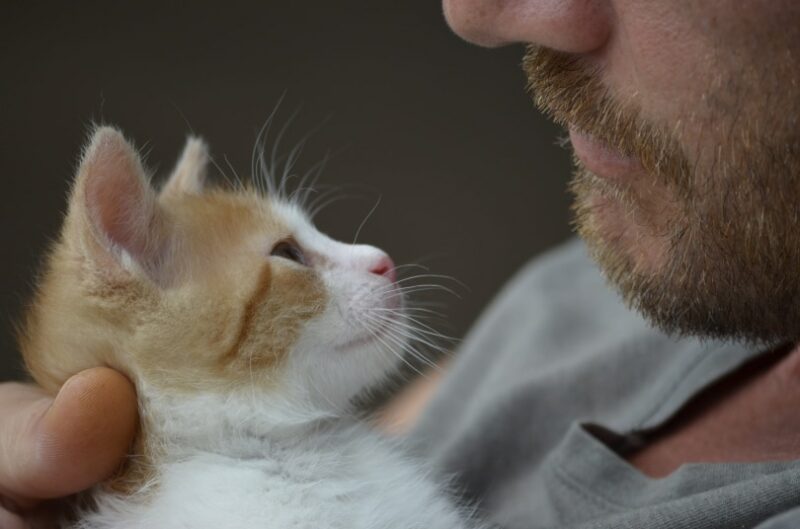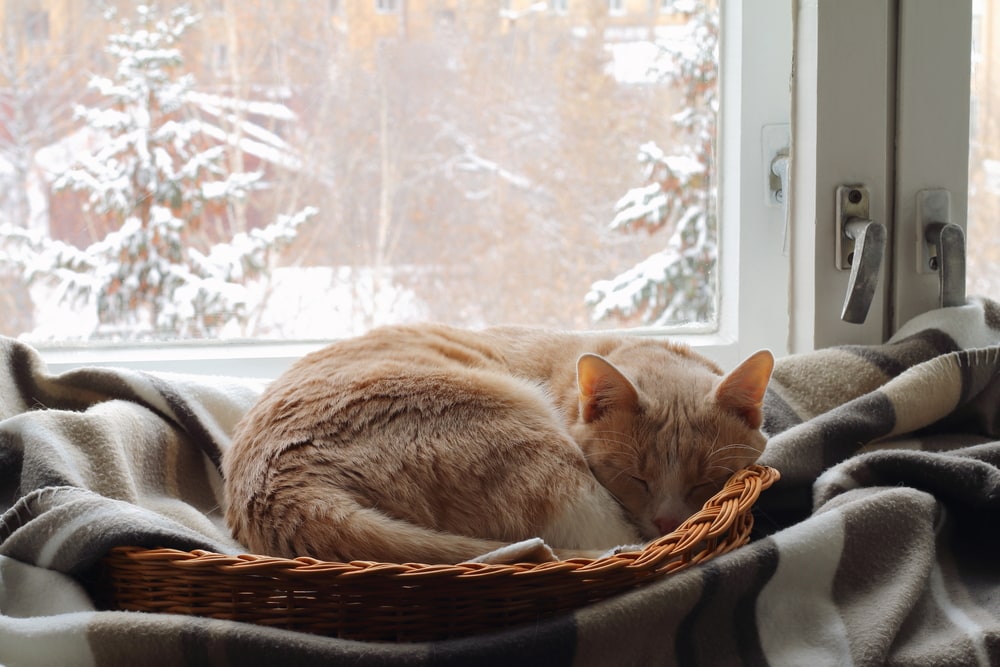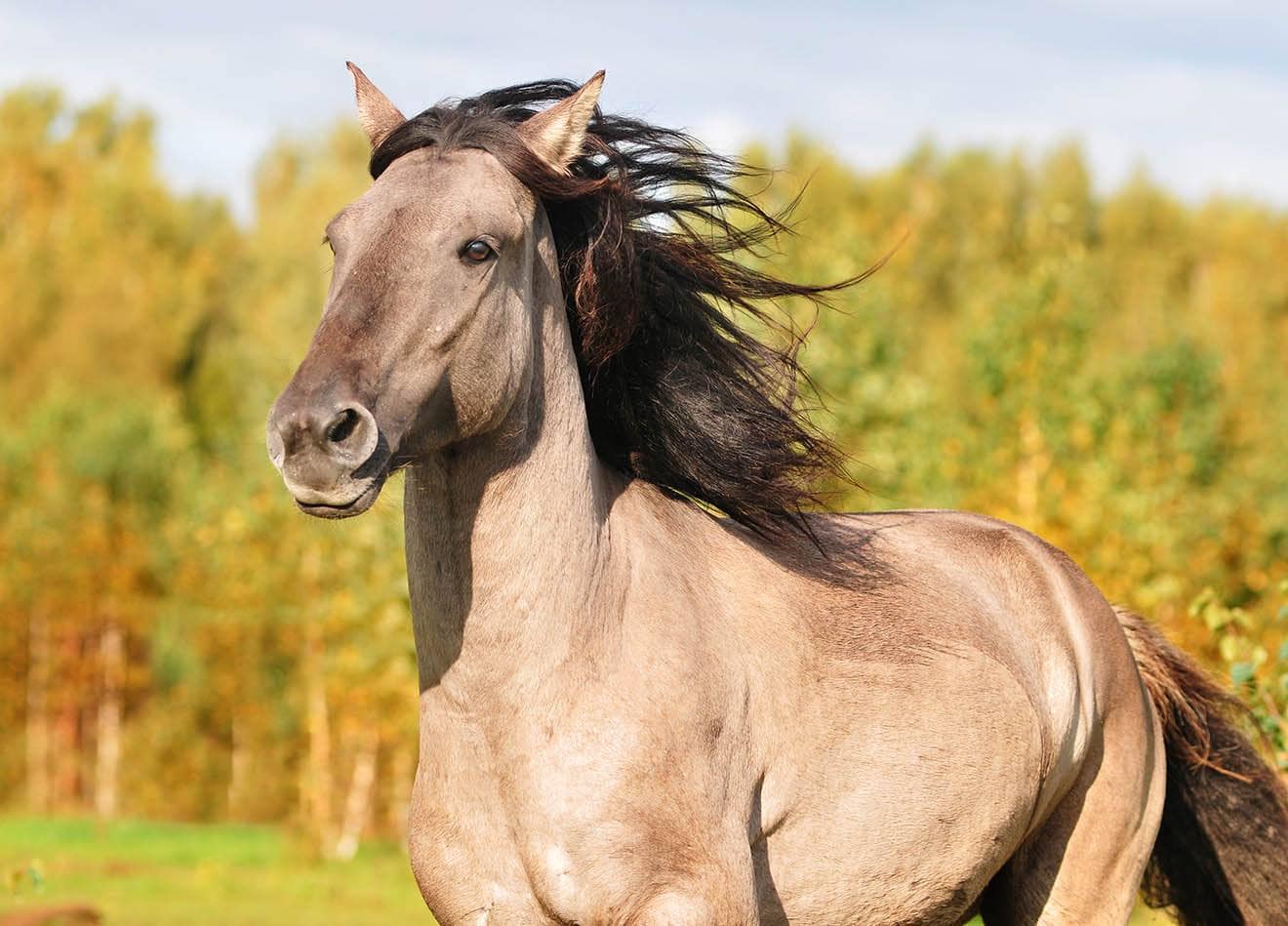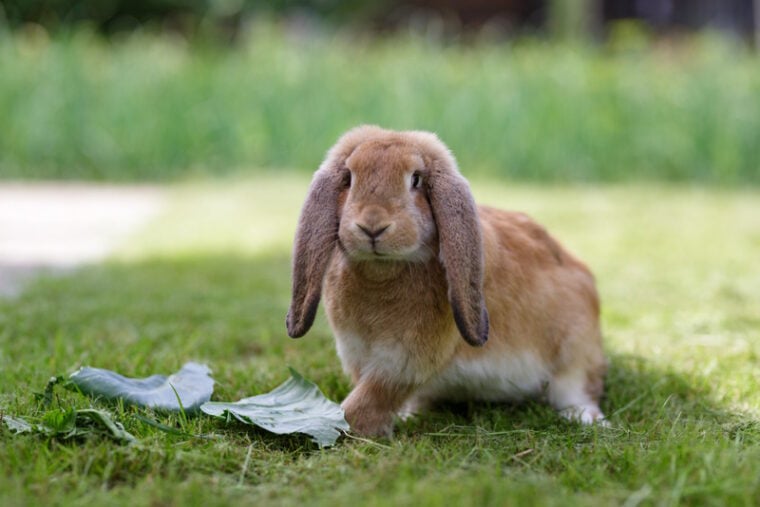
Click to Skip Ahead
So, the lovely French Lop has caught your eye—it’s no wonder you want more information! Whether you’re a brand-new pet parent or you’re just researching before you commit, educating yourself on the breed is a smart idea!
In this article, we will discuss the various aspects of owning a French Lop so you can see if they’re a good fit.
Breed Overview
| Size: | Large |
| Weight: | 10–15 pounds |
| Lifespan: | 7–12 years |
| Similar Breeds: | Flemish Giant |
| Suitable for: | Experienced rabbit owners with other rabbits |
| Temperament: | Gentle, agreeable |
The French Lop rabbit is often mistaken for the Flemish Giant because it is also extremely large. However, it does not quite get to the size of Flemish Giants and similar breeds. These interesting, intelligent rabbits can learn a variety of tricks and commands. Plus, they make the best snuggle buddies!
If you have been tossing around the idea of getting a pet bunny, you might have found the best option for your household. Let’s get to know this magnificent critter.
French Lop Breed Characteristics
How Much Do These Rabbits Cost?
Up front, a French Lop generally costs around $75. While pet stores might have a vast selection of rabbits, it isn’t necessarily the best place to buy one. First, many of these places have employees that aren’t necessarily experts in the subject but are rather more generalists.
Instead, it’s for the best to buy from a breeder who specializes in the breed itself. That way, you can get a real-life account of how they are as pets and what special care is required to keep them.
Rabbit expenses don’t just stop after the purchase of the rabbit, though! The cost of the rabbit is one thing; the cost of all those supplies is a totally different story.

Temperament & Intelligence of the French Lop
Like many giant breeds, the French Lop is an incredibly docile, good-natured rabbit. If you are looking for a starter pet for your child, don’t let the size of the French Lop intimidate you. These rabbits are actually quite gentle with children and can make great family pets.
These rabbits are very intelligent. You can train them to do tricks or learn their name. You can even litter-train them to use the bathroom in a designated space. They can easily learn their name and other simple words as well.
The more time that you spend teaching your rabbit, the more they will soak it up. You can be pretty hands-off with training and still be totally impressed with their mental capabilities.
Do These Rabbits Make Good Pets?👪
If you are trying to decide between certain rabbit breeds, the French Lop rabbit is a very good choice, especially for beginners. These rabbits tend to be very docile and easy to handle, making them the perfect pet for experienced children under direct supervision.
One fabulous thing about the French Lop is that they can make a mighty fine house pet. What does that mean? You can litter train them and let them out when you’re home without caging. It can be a great way to bond, and most describe it as similar to having a dog or cat.
These rabbits can be great for first-time owners, but they should always be supervised around small children. These rabbits are very large and can be hard to lift—or lift properly. It would be best if you always were around to ensure all is well.
Does This Rabbit Get Along with Other Pets?
The French Lop will generally get along very well with other rabbits of similar size. However, it won’t necessarily make the best playmate for other animals in the home in general. Large, loud, or active animals might frighten your rabbit, which could cause sudden heart failure.
They might do decently well with a very well-behaved small dog or cat. However, direct supervision is always a must if the two are together for any amount of time (no matter how used to each other they get).
You should never have a singular rabbit. They will get lonely and long for the companionship of their own species. If you commit to one rabbit, get another of either the same breed or like size. A major difference in size can result in bullying and power struggles.
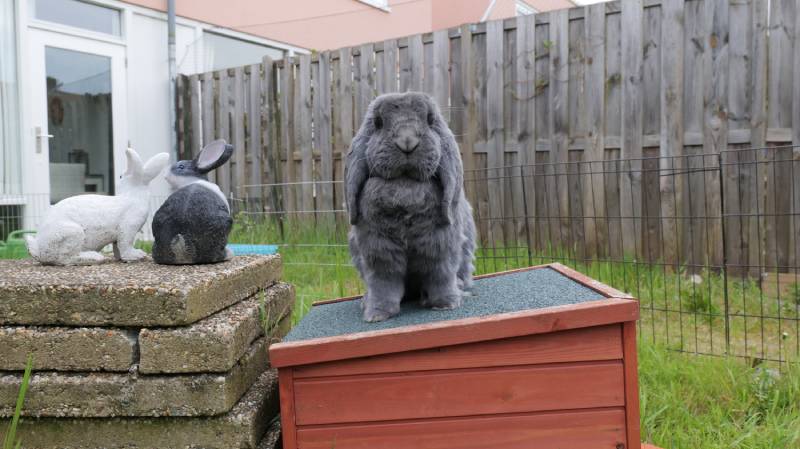
Things to Know When Owning a French Lop:
Food & Diet Requirements🥕
The ultimate diet you choose for your French Lop will depend greatly on its lifestyle, activity level, age, and weight. It would be best if you always spoke with your veterinarian about the best diet for your particular rabbit. Regardless of the exact amount you should feed your rabbit, getting a high-quality, nutrient-dense recipe is absolutely essential.
Hay is a very crucial aspect of your rabbit’s diet. It provides them with the fiber they require to regulate their digestive tract. Rabbits can be extremely temperamental in this regard, succumbing to several gastrointestinal issues.
Always make sure they have high-quality hay explicitly recommended for rabbits. A whopping 70% of your rabbit’s daily diet should be hay, so it’s extremely important to provide consistency and quality.
Not all rabbits require supplementation, but if you choose to give anything to your rabbit, clear any additional dietary boosts with your vet. They will discuss safety and benefits with you in detail.
Habitat & Hutch/Enclosure Requirements 🏠
You will want your rabbit to have enough space. They might sell tiny enclosures for pet rabbits on the market, but that doesn’t mean it’s a suitable area. Since these rabbits get very large, they need adequate homes to accommodate their exercise needs.
For one French Lop, they need a hutch that is at least 6 feet long x 3 feet deep x 2 feet high. Some people choose to let the rabbit go in or out at their leisure in the home. Others choose to house a rabbit outside.
Many folks buy playpens for their bunnies, too. It is usually a foldable design that is quick to set up and take down as needed. Plus, it gives you a way to control where they go during floor time so you can keep track of them better.
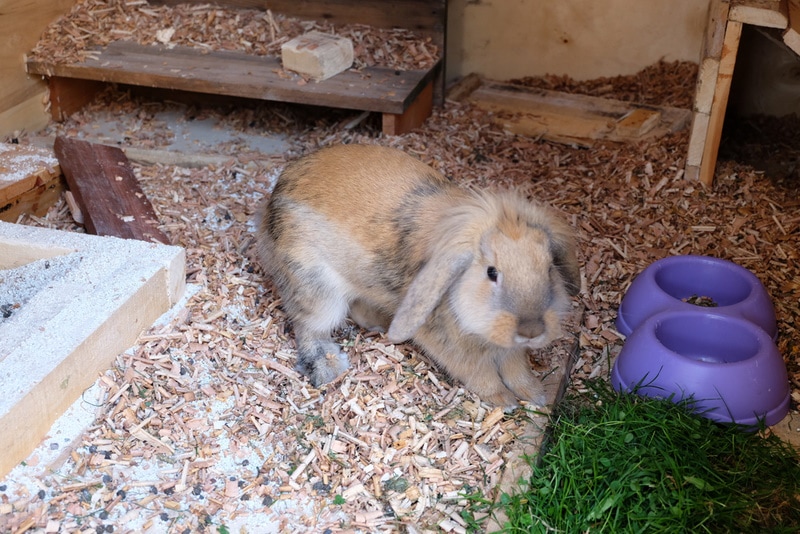
Exercise & Sleeping Needs🐇
In the wild, rabbits run around at their leisure. On average, a rabbit travels up to 3 miles per day. So, they don’t want to stay cooped up in their houses all day. Let them out to explore and look for ways to give them more exercise options.
You can make ramps, mazes, and plenty of DIY toys for them to enjoy. You can have your own little stash of rabbit entertainment for cage and floor time use.
Training🥎
Your rabbit is quite capable of learning a variety of concepts. You can even litter train them to use a box like a kitty. Many rabbit owners choose to let their bunnies free roam in the house while they’re at home.
As we mentioned earlier in the article, they can pick up various concepts—from very simple to moderately complex. They will also love figuring out mazes and playing other games out of the enclosure.
Grooming✂️
Rabbits are meticulous groomers, so taking care of them should be rather simple. At most, you should help your guy or gal out by brushing them once per week. During bulk seasons, you’ll likely have to increase frequency to daily brushing.
Bathing your bunny is unnecessary and can stress them out very much. Always limit or avoid full-body baths. You can easily wipe them down with a cloth—especially on the hocks. Hocks can get clogged with urine and fecal matter, which can cause disease.
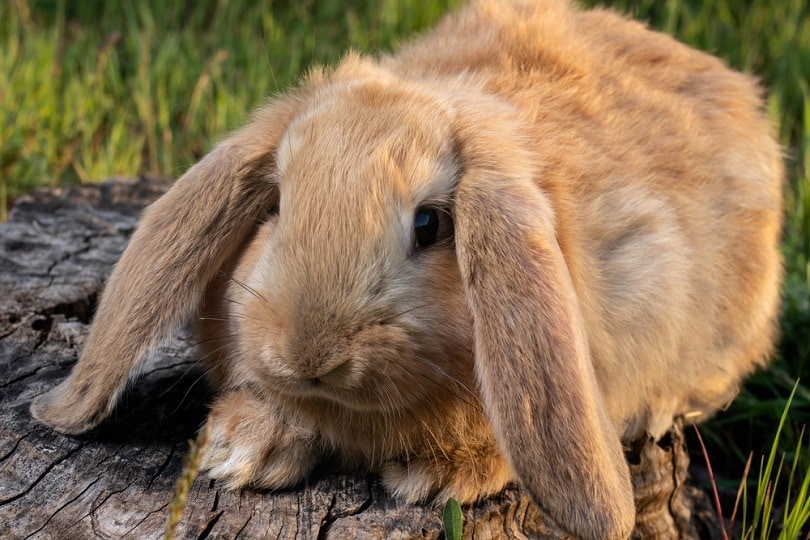
Lifespan and Health Conditions🏥
Understanding the various health issues your rabbit could face can be very difficult. Rabbits are prey animals, so for their own protection, they often don’t show signs of sickness until it is very advanced. If you notice that your rabbit is acting strange, it is important to get them vet care right away, as this could mean life or death for your animal.
Male vs Female
When deciding to buy a male or female, it’s important to understand that each rabbit will have their very own personality. That means being male or female doesn’t necessarily dictate these traits.
However, females tend to be more adventurous and on-the-go. Males are a bit more lackadaisical and calm. So, even though both are great, a male might be better for families looking for a calmer rabbit—and a female might be better for experienced owners.
Males can get substantially larger than their female counterparts.
3 Little-Known Facts About French Lops
1. French Lops generally weigh around 10–15 pounds as adults.
2. The French Lop can have two coat patterns: solid or broken.
3. French Lops can be difficult for some people to handle due to their size.
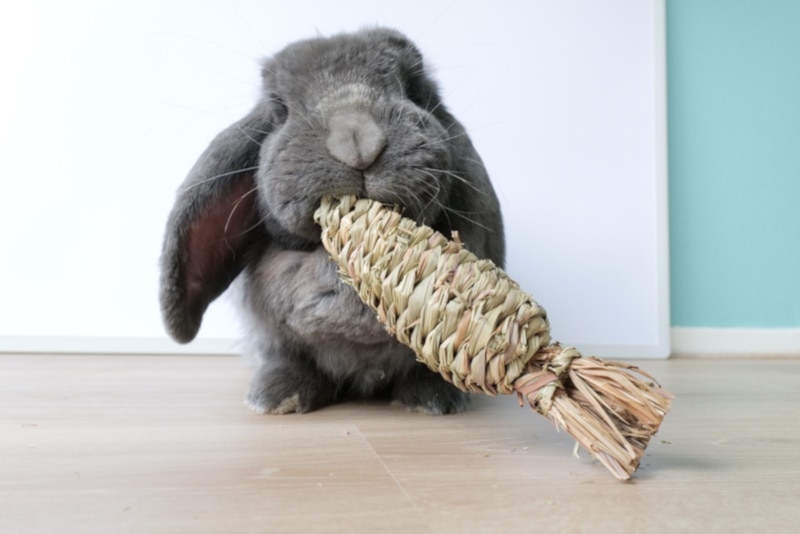
Final Thoughts
French Lop rabbits are wonderful pets in the right home situations. They are capable of learning advanced tasks like potty training, so they can be out with you anytime! You’re sure to love the extra company without the poopy cleanup.
If you are looking for a large rabbit and you have the space, French Lops are among a lineup of gentle giants that can add companionship and entertainment to your household.
Featured Image Credit: Anton Nikitinskiy, Shutterstock


